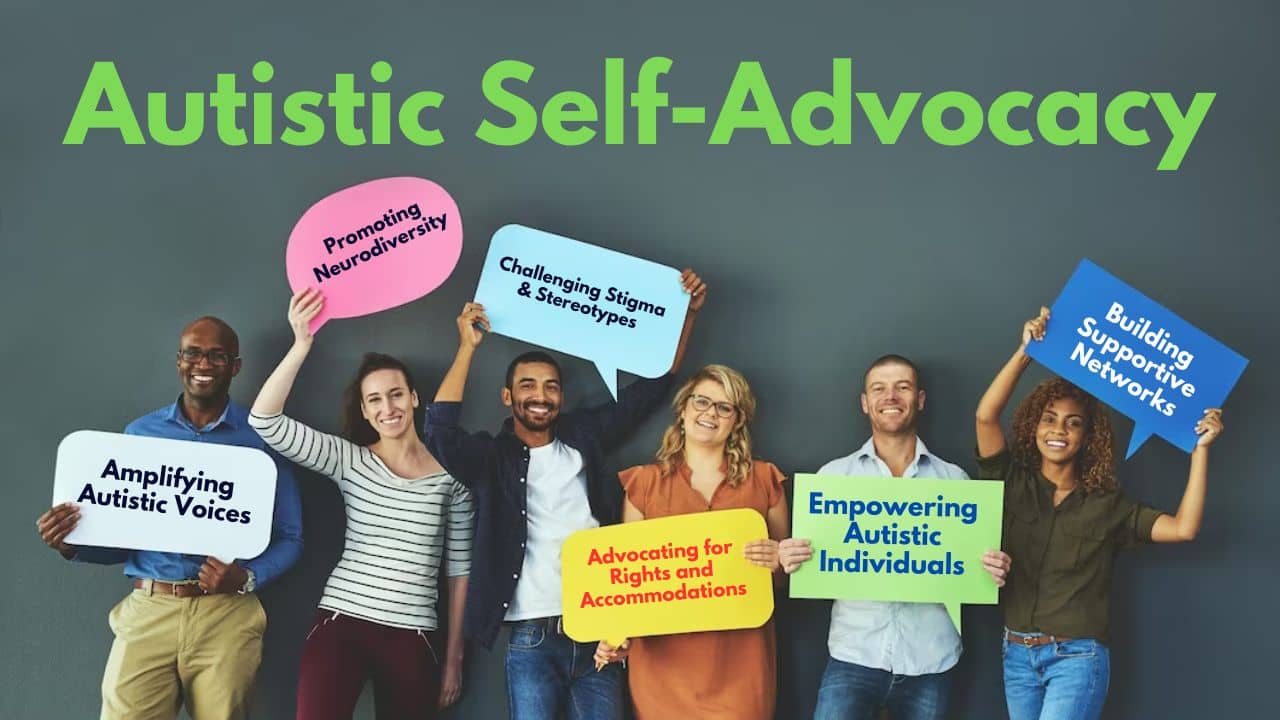Autistic self-advocacy is a profound movement that empowers individuals on the autism spectrum to speak up, share their experiences, and advocate for their rights, needs, and aspirations. In a world that is gradually recognizing the value of diverse voices, self-advocacy stands as a beacon of change, challenging stereotypes and promoting understanding. In this blog post, we delve into the essence of autistic self-advocacy, its impact, and how it contributes to creating a more inclusive and accepting society.
What is Autistic Self-Advocacy? And why is it important?
The Essence of Autistic Self-Advocacy
Autistic self-advocacy is rooted in the principle that individuals with lived experiences of autism are the most qualified to express their needs and preferences. It embodies the idea that nobody knows autism better than those who experience it firsthand. This movement encourages autistic individuals to embrace their identity, voice their concerns, and actively participate in shaping the discussions that affect their lives.
Empowerment and Identity
Self-advocacy provides a platform for autistic individuals to reclaim their narratives and assert their identities. It promotes self-awareness, self-acceptance, and the recognition that being autistic is a valid and valuable aspect of their identity. This empowerment helps to counter negative stereotypes and fosters a sense of belonging and self-worth.
Breaking Stereotypes and Challenging Misconceptions
Through self-advocacy, autistic individuals challenge common misconceptions and stereotypes about autism. They showcase the rich diversity within the autistic community, emphasizing strengths, talents, and unique perspectives that often go unnoticed in mainstream narratives.
Impact of Autistic Self-Advocacy on Society
1. Educational Advocacy: Self-advocacy plays a vital role in promoting inclusive education. Autistic self-advocates advocate for appropriate accommodations and understanding within educational settings.
2. Employment Opportunities: Autistic individuals can advocate for workplaces that recognize their skills and provide necessary accommodations, fostering a more diverse and innovative workforce.
3. Policy Changes: The voices of self-advocates influence policy discussions, leading to more inclusive legislation that protects the rights and needs of autistic individuals.
4. Media Representation: Self-advocacy encourages accurate and respectful representation of autism in media, challenging harmful portrayals and promoting authenticity.
Fostering Autistic Self-Advocacy
1. Education: Encourage self-advocates to learn about their rights, available resources, and strategies for effective advocacy.
2. Building Confidence: Create safe spaces where autistic individuals can practice expressing their thoughts and ideas without fear of judgment.
3. Mentorship: Connect emerging self-advocates with experienced individuals who can provide guidance and support.
4. Providing Platforms: Offer opportunities for self-advocates to share their stories through blogs, podcasts, workshops, and public speaking engagements.
Here are some tips to effectively teach self-advocacy skills:
For Parents:
1. Model Self-Advocacy: Demonstrate self-advocacy in your own life by openly expressing your needs, making decisions, and seeking support when necessary. Your actions serve as a powerful example.
2. Encourage Communication: Create an open and non-judgmental environment where your child feels comfortable sharing their thoughts and feelings. Encourage them to express their needs and preferences.
3. Identify Strengths: Help your child recognize their strengths and interests. Connect these strengths to instances where self-advocacy can be applied, such as choosing activities or subjects they enjoy.
4. Teach Self-Awareness: Guide your child in understanding their strengths, challenges, and sensory sensitivities. This self-awareness forms the foundation for effective self-advocacy.
5. Use Social Stories: Social stories can help explain different situations where self-advocacy is important. Create stories that demonstrate how to ask for help, express preferences, or communicate discomfort.
6. Practice Decision-Making: Involve your child in decision-making processes, even in small matters. Discuss pros and cons, and encourage them to voice their opinions.
7. Role-Playing: Engage in role-playing scenarios where your child practices self-advocacy in various situations, such as asking for a preferred classroom seat or explaining their needs to a teacher.
8. Encourage Questions: Teach your child that asking questions is a valuable part of self-advocacy. Encourage them to inquire about things they don’t understand or need clarification on.
For Educators:
1. Promote Inclusion: Create a classroom environment that values diversity and encourages all students, including autistic individuals, to express their thoughts and preferences.
2. Individualized Supports: Collaborate with parents to develop Individualized Education Programs (IEPs) that incorporate self-advocacy goals and strategies tailored to each student’s needs.
3. Teach Communication Strategies: Introduce communication tools such as visual schedules, communication boards, or AAC devices to assist students in expressing themselves effectively.
4. Set Clear Expectations: Clearly explain classroom rules, routines, and expectations. This clarity helps students understand what is expected of them and when they should seek help.
5. Offer Choices: Provide opportunities for students to make choices within the classroom. This practice encourages decision-making and builds confidence in expressing preferences.
6. Conflict Resolution Skills: Teach problem-solving and conflict resolution techniques, helping students navigate disagreements and express their feelings respectfully.
7. Positive Reinforcement: Celebrate instances where students practice self-advocacy, whether it’s asking for help, stating a preference, or explaining their needs.
8. Regular Check-Ins: Establish a routine of checking in with students individually. This provides a chance to discuss how they’re feeling, whether they need support, and if they have any concerns.
By nurturing self-advocacy skills from a young age, parents and educators contribute to the holistic development of autistic individuals. These skills empower them to navigate the world with confidence, make informed decisions, and assert their rights and preferences.
Conclusion
Autistic self-advocacy is a vital force in the journey towards a more inclusive and accepting world. It empowers individuals to break free from societal constraints, champion their needs, and contribute to positive change. By recognizing the importance of self-advocacy, society moves closer to a future where diverse voices are not only heard but celebrated, leading to a more compassionate and understanding world for everyone.





